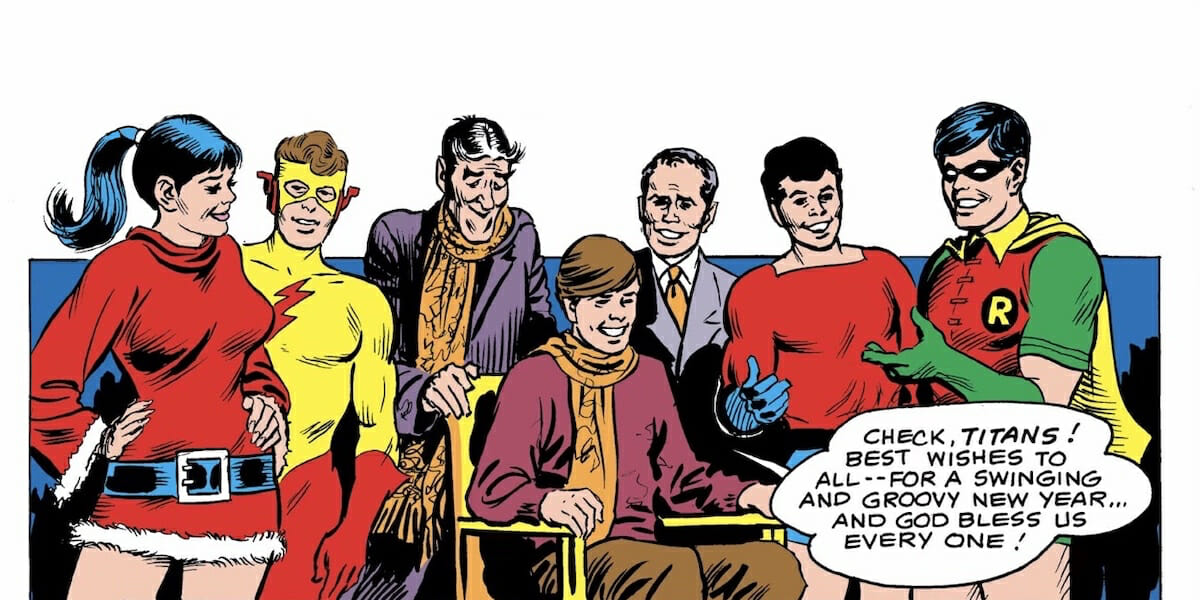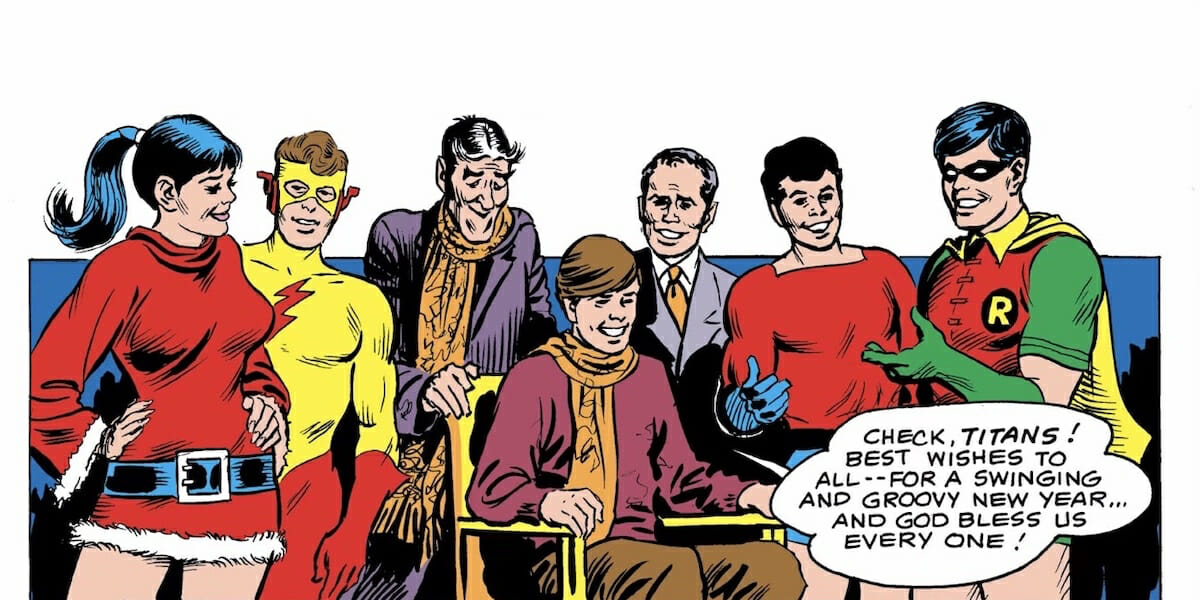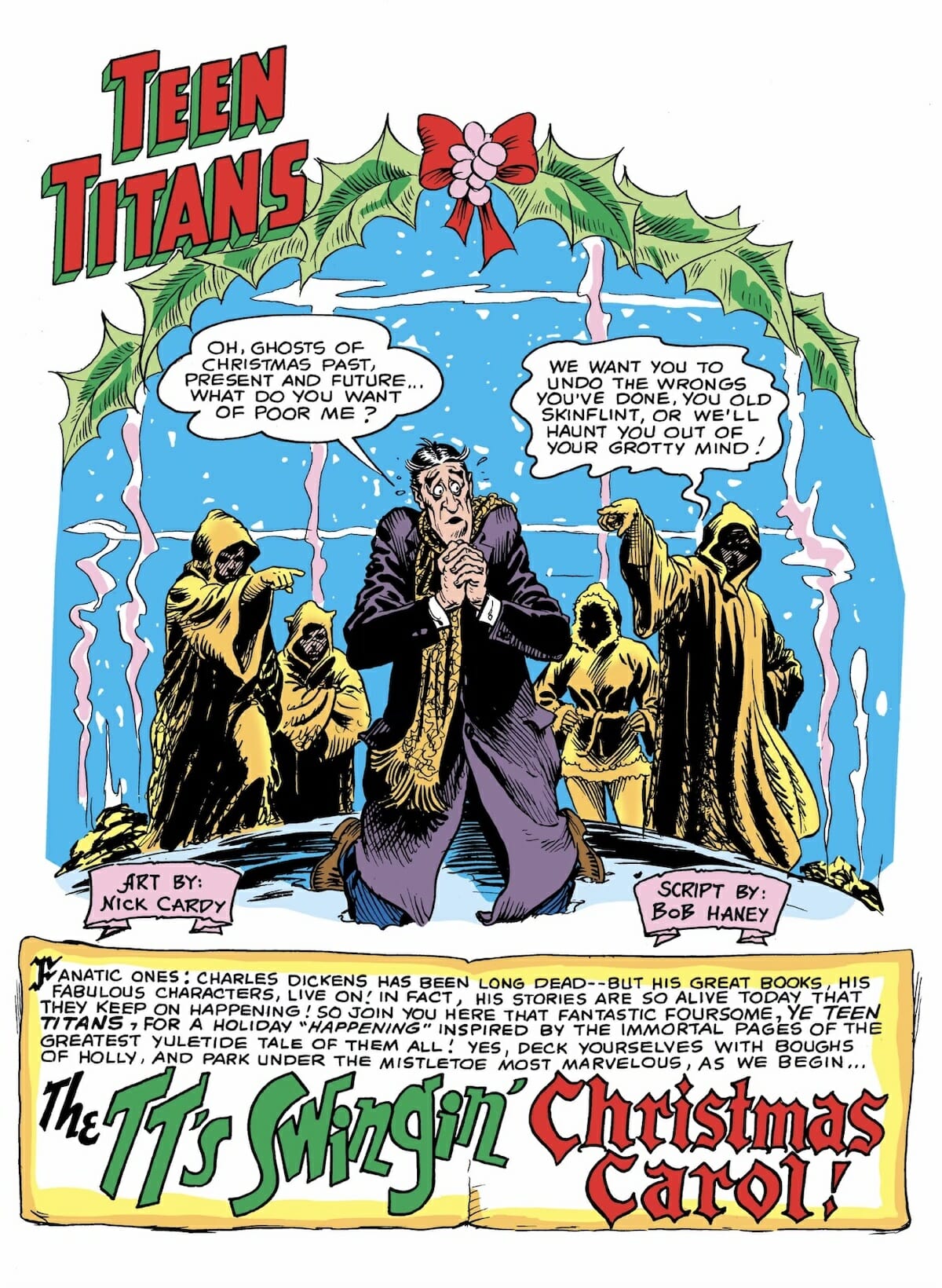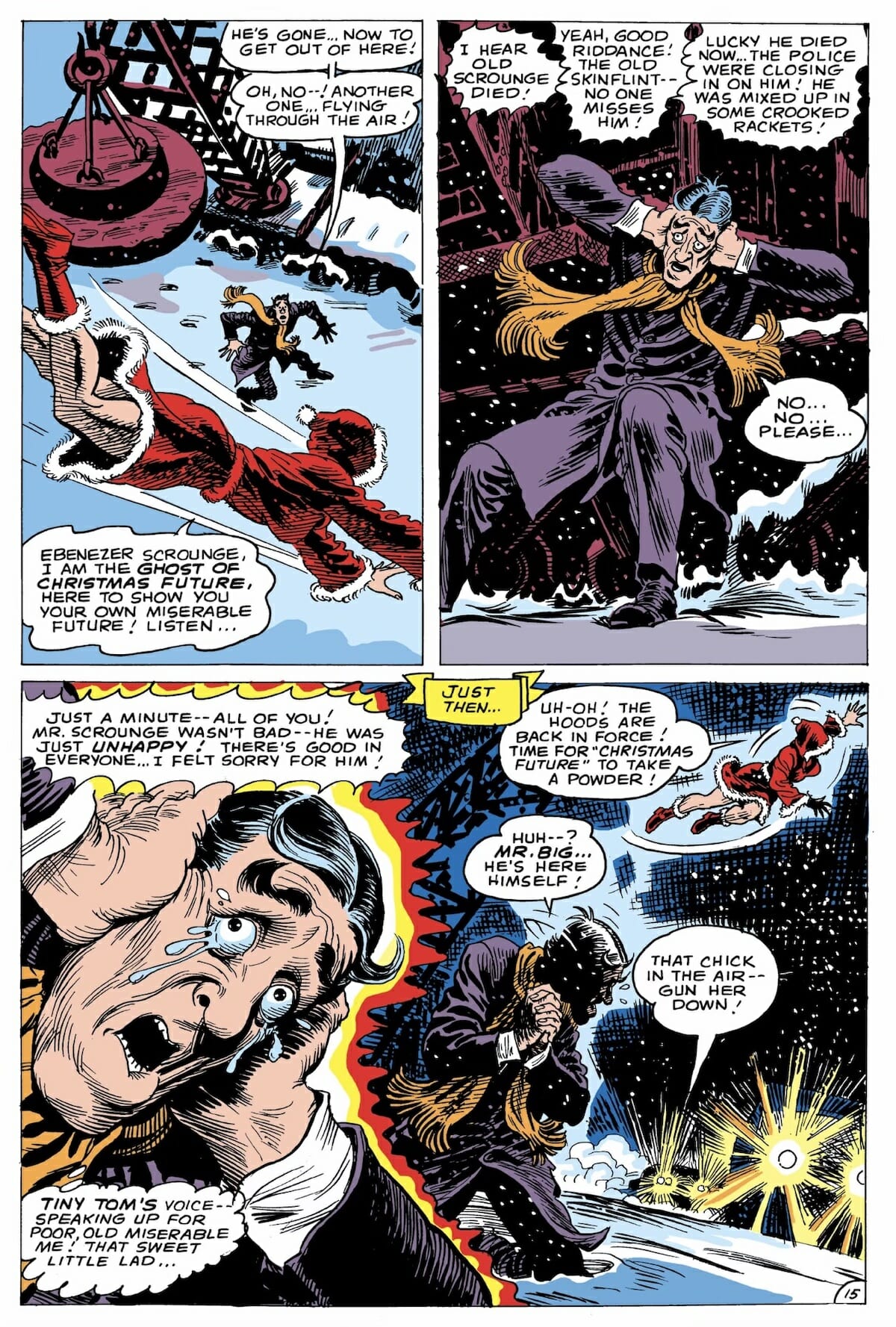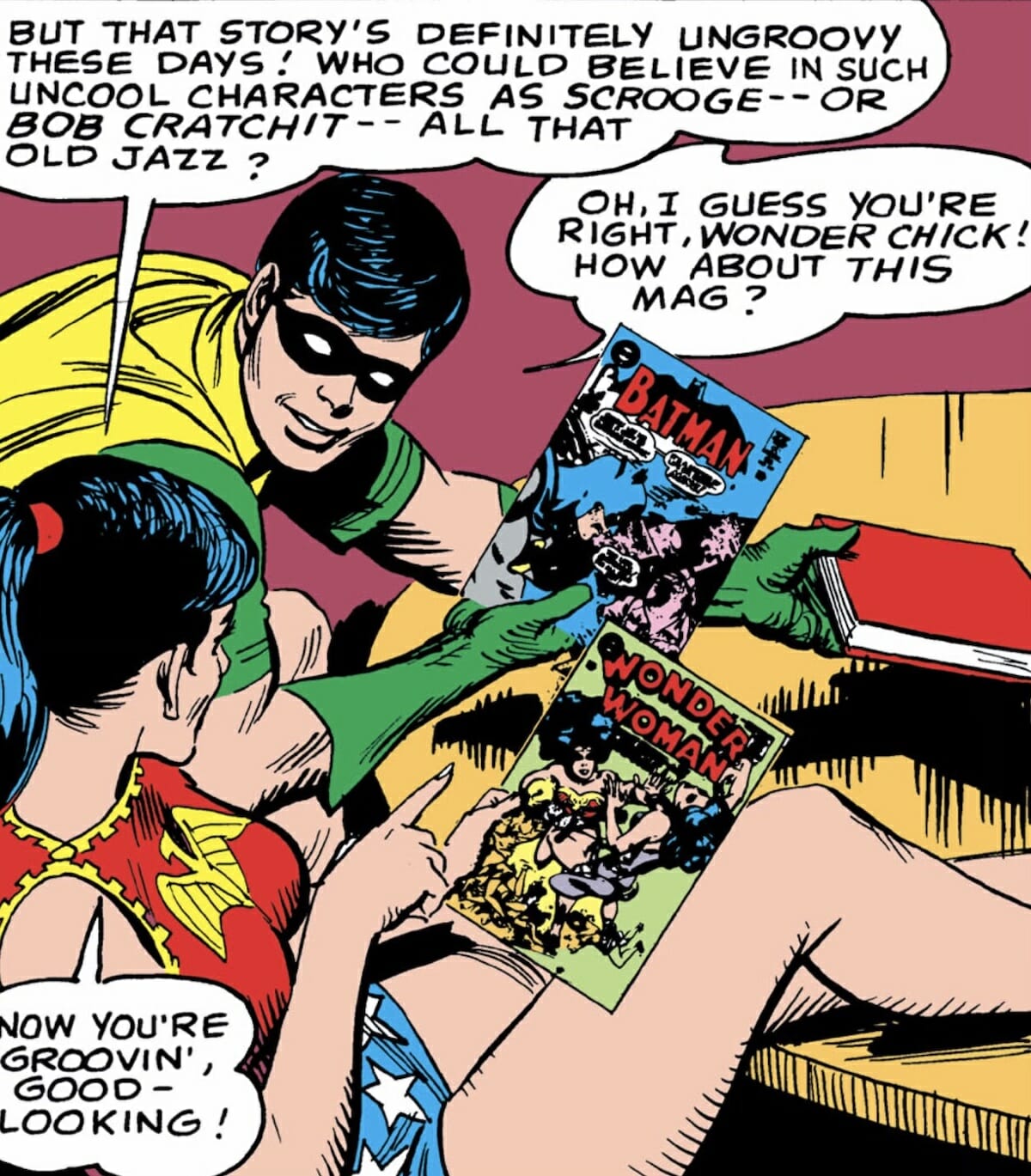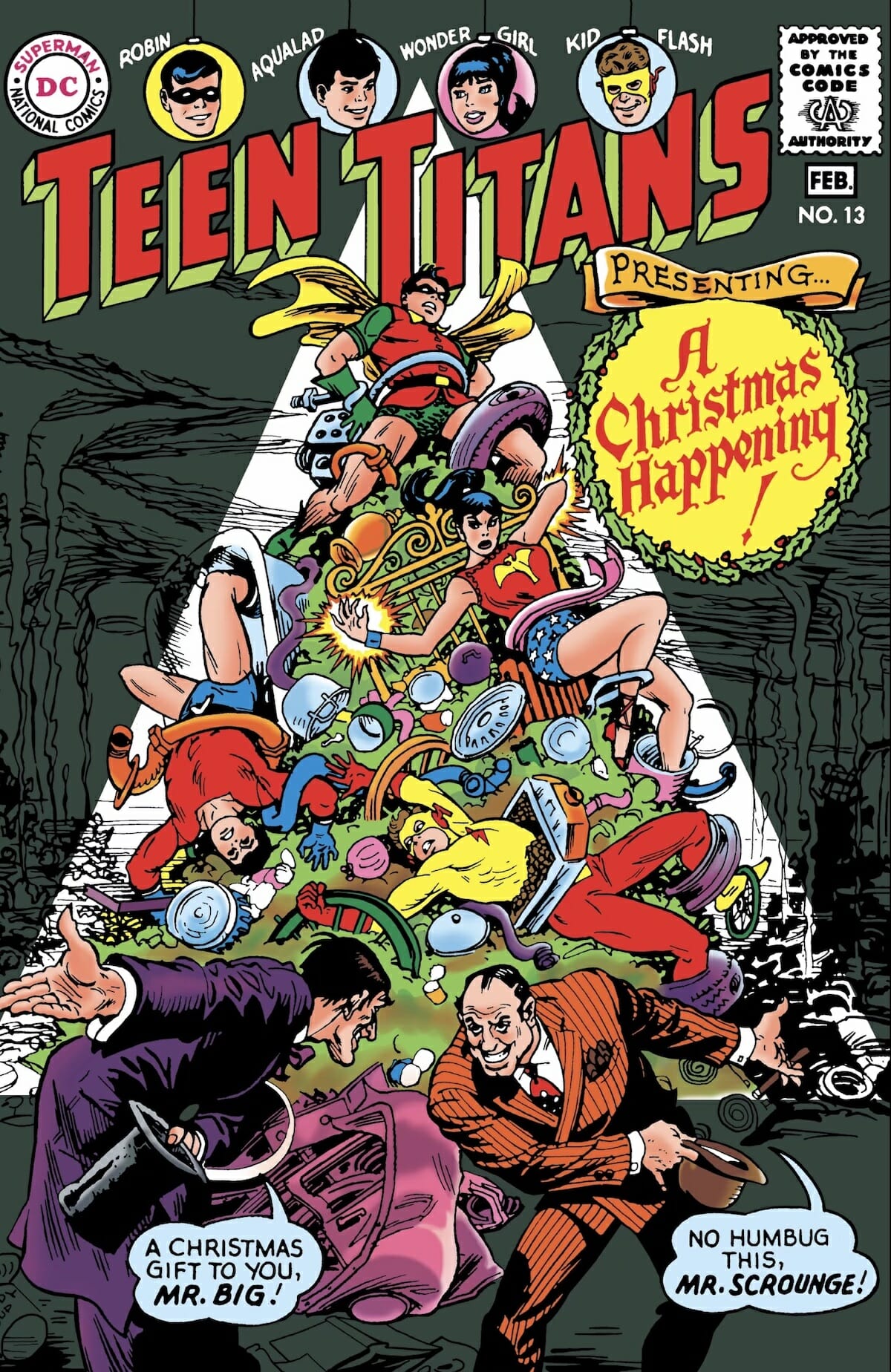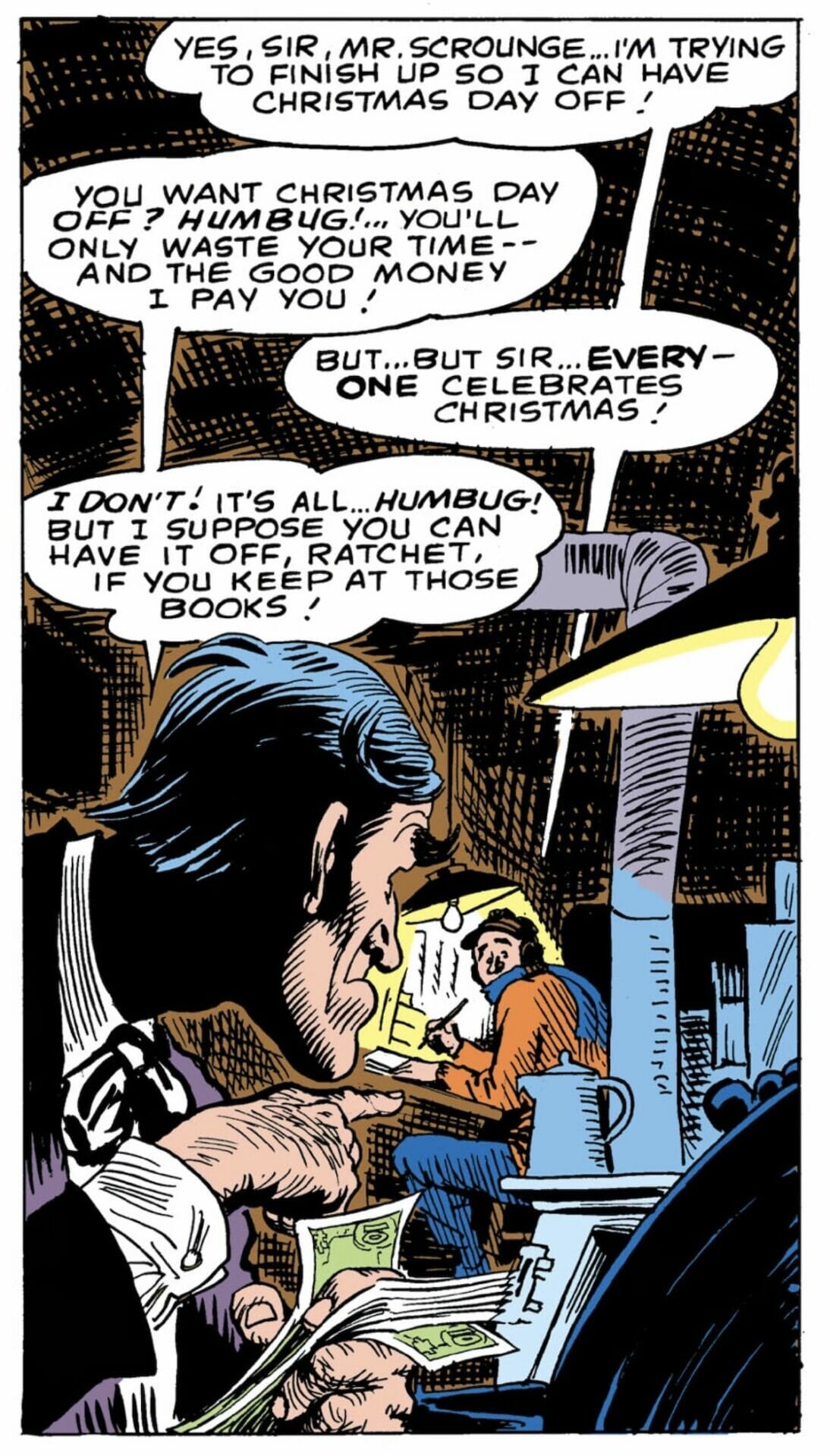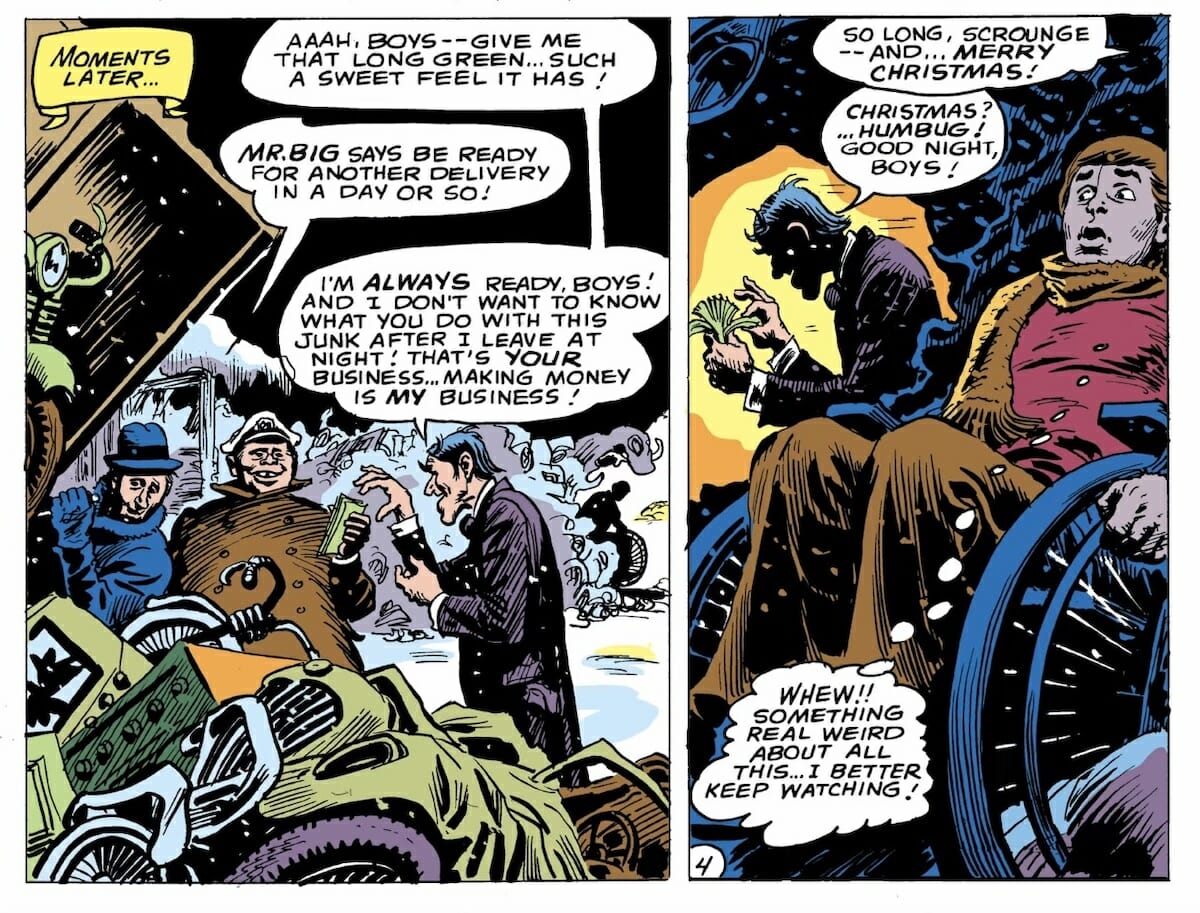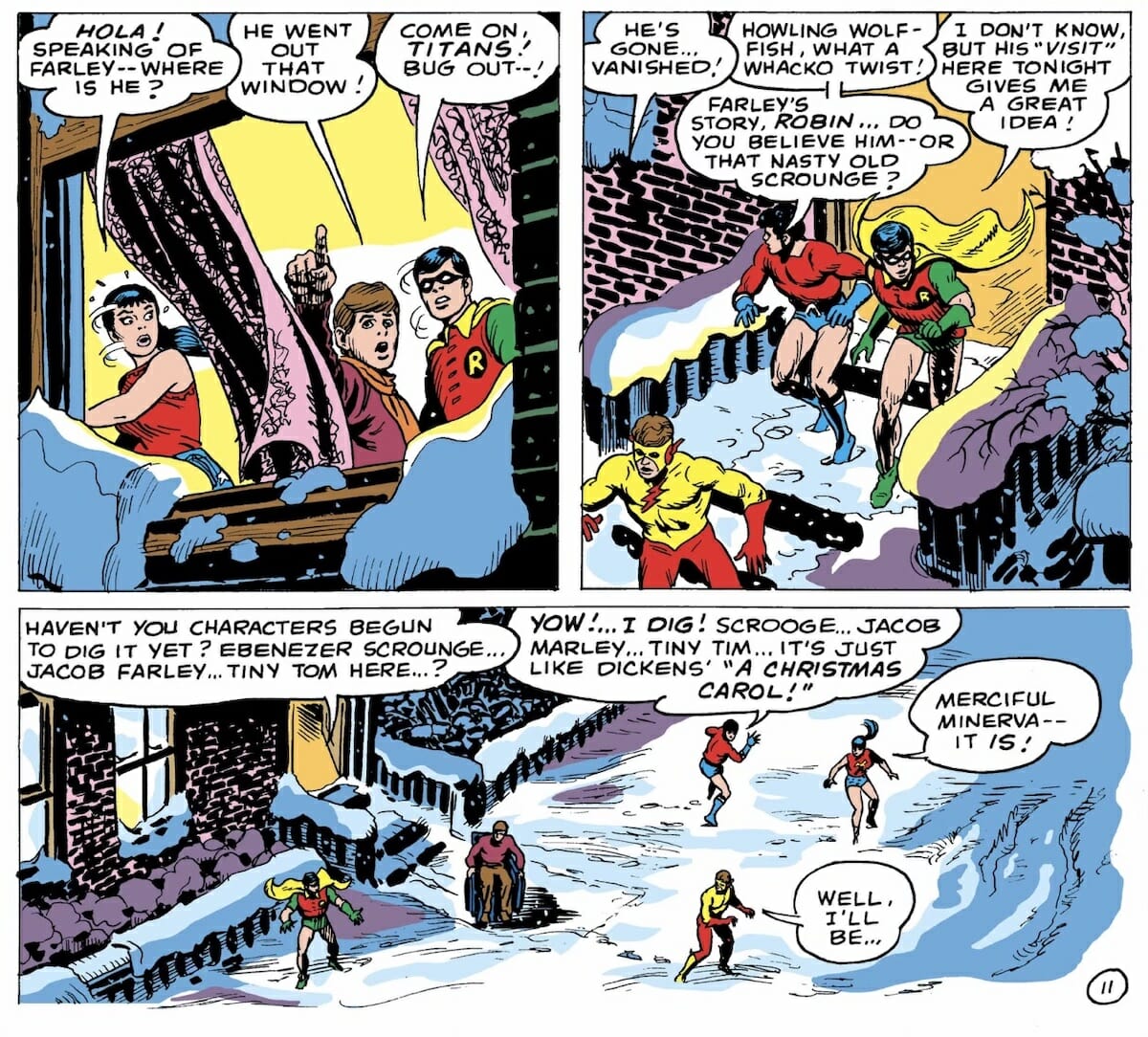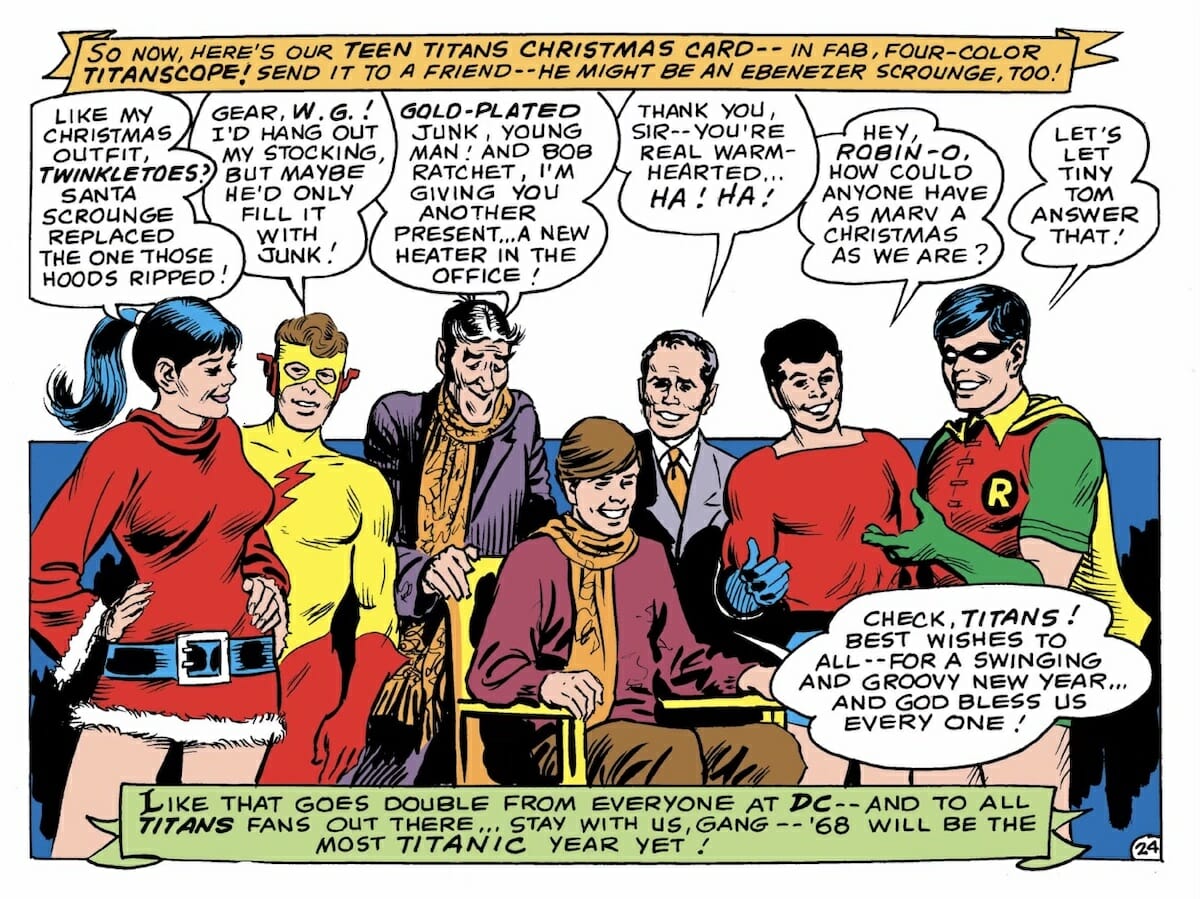The very first page of 1967’s Teen Titans #13 tells you everything you need to know about what you’re about to read. The reader is immediately greeted by the sight of a cartoonish old man, obviously scared, kneeling and pleading, “Oh, Ghosts of Christmas Past, Present and Future… What do you want of poor me?” One of those aforementioned Ghosts is pointing at the figure accusingly, declaring that he has to change his ways “or else we’ll haunt you out of your grotty mind!” Notably, even though the figure references three Ghosts, there are four figures behind him — one of which has foregone the cloaks of their compatriots in favor of a ruffled miniskirt and hood combo.
At the bottom of the page is a block of outrageous introductory text, inviting readers to “deck yourselves with boughs of holly, and park under the mistletoe most marvelous.” Then, the title of the issue in oversized lettering: “A Swingin’ Christmas Carol!” (Both the dropped “g” in “Swingin’” and the exclamation point are part of the official title; it’s that kind of a comic.)
The original 1960s run of Teen Titans was miles away from the slick, mainstream superheroics that audiences are familiar with from the property these days. That kind of thing would arrive in the same 1980s run as the soap operatics that would go on to define the property for more than a decade, when creators Marv Wolfman and George Perez took a defunct, corny comic book and started over, labeling the result New Teen Titans to emphasize the difference.
Instead, the first run was the corny, failed mess that Wolfman and Perez sought to distance themselves from; a comic created to speak to a counter-culture youth but created by men that very obviously didn’t come from that demographic, with the result being something that personified the “How do you do, fellow kids?” meme decades before 30 Rock was even a glimmer in Tina Fey’s eye.
A story called — with no sense of irony or shame — “A Swingin’ Christmas Carol” was entirely in keeping with the attitude of the original Teen Titans book, then, as was the idea of inserting the titular superheroes into a retelling of the Charles Dickens classic that also references the original. (“Yow! I dig! Scrooge… Jacob Marley… Tiny Tim… It’s just like Dickens’ “A Christmas Carol!” Aqualad helpfully points out, midway through the story, in case the reader was asleep to that point.) After all, writer Bob Haney was never one to opt for subtlety when the alternative was available, which was one of his greatest strengths.
Haney’s fidelity to the source material is an admittedly moving target in “Swingin’.” Although characters are named similarly to the Dickens original — Ebenezer Scrounge, Bob Ratchet, Tiny Tom, and Jacob Farley, instead of Scrooge, Cratchet, Tiny Tim, and Marley — the overall plot is something significantly different, with Scrounge involved in a smuggling plot that features some high-tech Macguffin that magically transforms scrap metal into imported cars, introducing a new element of danger for plucky Tiny Tom Ratchet as he uncovers the crime and calls in the Titans to sort things out. Rather than indulge in some straightforward heroics, the Titans decide to take inspiration from Dickens and inspire Scrounge to change his ways by pretending to be Ghosts, because… well. ’Tis the season, and all that.
Things go wrong, of course, and in the tradition of the time, it’s Wonder Girl who’s the problem. The low-key misogyny of Teen Titans is, at times, breathtaking; outside of the fact that everyone is always hitting on Wonder Girl — and, more often than not, calling her “Wonder Chick,” because that’s how old men in the 1960s though the youth spoke — the amount of time that Wonder Girl, who has superpowers unlike half of her male comrades, is the downfall of the team simply because, is stunning. In this story, she’s undone by a giant magnet attracting her metal bracelets (“They’re yanking Miss Ponytail out of our ever-lovin’ hands!”) before dropping her into a car crusher that she somehow can’t escape from even though she can fly…?
Before too long, all of the Titans have been captured by an unnamed gizmo because that’s what the plot demands, causing Scrounge to have a change of heart and turn against his fellow criminals in the most spectacular manner possible, declaring, “You’re not turning on anything, because I’m turning you off — and that’s no humbug, Mr. Big!” As if that’s not enough proof that the Christmas Spirit has moved the old skinflint, he goes on to use the Macguffin to build Tiny Tom a new electric wheelchair, prompting cries of “The greatest!” and “Groovy!” from the appreciative Titans.
As if this isn’t reason enough to consider “A Swingin’ Christmas Carol!” perhaps one of the greatest tellings of the classic tale ever produced, there’s the fact that the entire thing is illustrated by Nick Cardy with a sensitivity and subtlety that feels at odds with Haney’s blunt-force wannabe mod writing. Through a charming line that’s scratchy and soft, and seemingly influenced by classic illustration work from decades earlier — everything that Teen Titans isn’t, in terms of its writing — Cardy brings the ridiculous story to life in a manner that it arguably doesn’t actually deserve, introducing a warmth and humanity that the dialogue doesn’t support. The tension between the two, somehow, only makes the comic an even stranger, even more fascinating, object.
By traditional rules, Teen Titans #13 shouldn’t work. It’s filled with cliches, embarrassing attempts to talk the same language as “the kids,” and feels out of time with itself, seeming both timeless and embarrassingly, instantly, dated simultaneously. However, doesn’t all of that also describe the holiday season? Despite all logic and evidence to the contrary, it’s possible that “A Swingin’ Christmas Carol!” is somehow the most perfect Christmas comic of them all. Let’s just call it a Yuletide Miracle and be appropriately grateful to every single wonderful ghost responsible.
